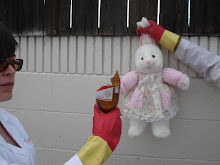SILICA --> DIATOMS --> CO2 UPTAKE --> BROAD GLOBAL IMPLICATIONS!
I am running samples for Silica today. And I ran samples for Silica yesterday. And I will probably be running Silica samples tomorrow. How do you run Silica samples, you ask? Well, I’ll tell you!
We use a technique called colorimetry. In a nutshell, we add a little bit of our water sample, add a cocktail of hazardous chemicals, pump the mixture into a machine called a Spectrophotometer and presto-chango we get an absorbance reading! Absorbance is a number that makes no sense until it’s put in the context of a standard. Here, let me explain.
Imagine that you are a fancy-pants scientist with a very expensive and very sensitive Spectrophotometer. Your Spectrophotometer has a beam of light built somewhere in its complicated interior. When you stick something in front of that light, the little reader inside the Spectrophotometer says “Hey, that asshole put something in front of me. This is how much my beam of light has changed.” You record this number. Please dismiss any disparaging comments made by your scientific instruments because this senario imaginary and scientific instruments don’t talk. But if they did, they would be grumpy.
Now about this standard business – a standard is just a sample with a concentration that you know precisely. You want to use a couple of standards with different concentrations so you can get a good range of values. In your imaginary lab, you’ll run your standards and say to yourself “A standard with concentration X gave me an absorbance reading of Y”. When you do this for all of your standards you’ll end up with a nice linear relationship between absorbance and concentration. You’ll get yourself a simple equation that you can pop all of your meaningless absorbance readings into and get out very useful concentrations and then make lots of charts and tables and powerpoint presentations with your data.
What we’re dealing with here is described by Beer’s Law. This is a serious scientific law with important implications and has nothing to do you with you doing a keg stand at your frat brother’s 23rd birthday party last year so quit snickering. Beer’s Law relates Absorbance (what your little spectrophotometer reads out) and Concentration (what you are trying to get). Beer’s law says:
I1 / Io = 10^-A. where A = l*c*k (the little ^ tells you that -A is an exponent)

Io is the intensity of the light you start with, I1 is the intensity of the light after it has passed thru your sample (see figure), A is the absorbance (what your instrument reads out), l is the path length of the beam, k is your “absorbance coefficient” (whatever that means), and c is the concentration in your sample (what you want).
In a perfect world you would know all these things. You would know your beam path length and your initial intensity and all that shit. But the big secret is that science is imperfect. Your spectrophotometer is gonna get bumped around and glassware is going to get dropped on it or samples spilled on it or cheeto crumbs mashed into it somewhere. This is why you use the ole’ standards trick 'cause now you can avoid having to use Beer’s Law. See, scientists aren’t perfect either. We just plan ahead because we know how sloppy and clumsy we really are.


